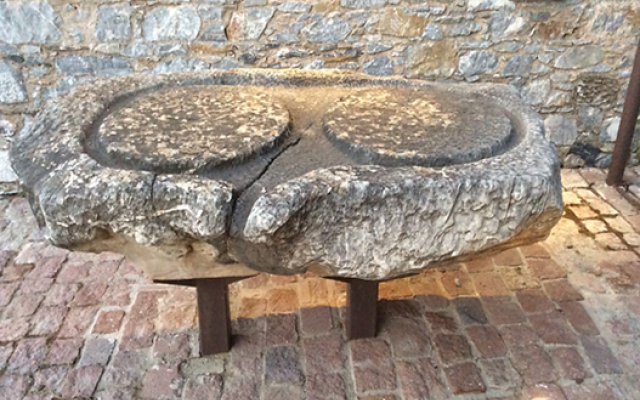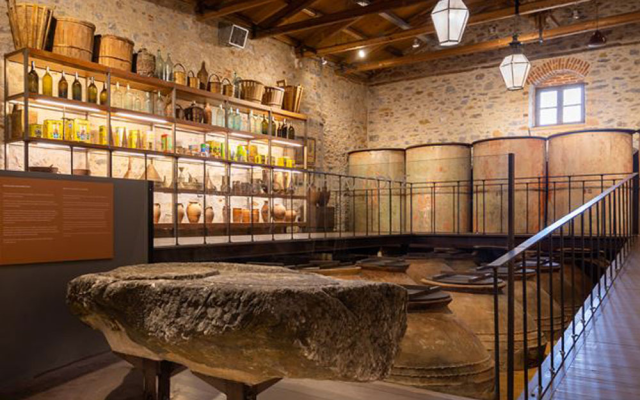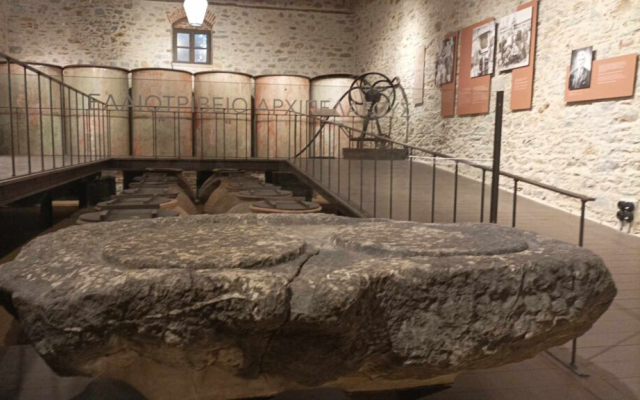The creation of the Iera Gold logo drew inspiration from a rare find: a double lino ( a stone oil press) of the Hellenistic period, dating back to the 3rd-2nd century BC, in the area of Gera on Lesbos. The double den is currently on display at the 'Vrana Oil Mill-Museum' in Papados, Gera, testifying to the long tradition of olive oil production in the area.
Two circles: Linked together, they symbolize infinity, perpetual motion and the undeniable timelessness of olive cultivation. The olive tree, as a fruit and a symbol, existed, exists and will continue to exist, keeping alive the heritage and dedication to the art of producing excellent olive oil.
Olive tree: placed in the centre, it is embraced by the two circles, underlining the central place of the olive tree in the history, culture and economy of the region. The olive tree, as a centuries-old tree, stands tall, symbolizing the resilience, wisdom and infinite fertility of the earth.
By adopting this logo, Iera Gold also adopts the heritage, dedication and perpetual commitment to the production of excellent olive oil. Every drop of Iera Gold carries the quintessence of centuries of experience, love for the olive tree and dedication to the art of olive production.
Double stone grooves
The type of double lino, as in the example from the Vrana Museum, is extremely rare in Greece and is directly related to the size of the olive oil production that had to be ensured in a short period of time, due to the volume of olive fruit harvesting and the shortening of the production process of mashing and oil production. Pressing bases with two circular grooves are extremely rare in Greece.
It operated with two levers and counterweights. The press was a simple construction consisting of two elongated planks of wood, fixed to a stable vertical surface, tied together, which were pulled downwards by counterweights made of large stones or sacks of stones, in order to press the plates, under which were the baskets with the ground pulp, placed on the pressing bases.
The oil flowed into the grooves and was collected in a clay or stone vase, which was placed underneath the front of the compression base. We consider the double stone cistern from the Vrana Museum to be an indicative example of an inventive solution of ancient Greek technology for the production of olive oil in large quantities and in a short period of time, probably owned by a prominent family living in the village of Plakados in Gera.
It is the only double-barreled den that has been found on Lesvos. It links the olive oil production of Lesvos in antiquity with the cultivation of the olive tree, which today is the most important, indigenous and productive product of the Aeolian land. The olive-growing Lesbos seems to have occupied an undoubtedly important position in the primary agricultural and economic activity of the Aegean area in antiquity, as the literary sources tastify to the importance of the olive tree as an integral part of the living standards of the Lesbian people in historical times.


